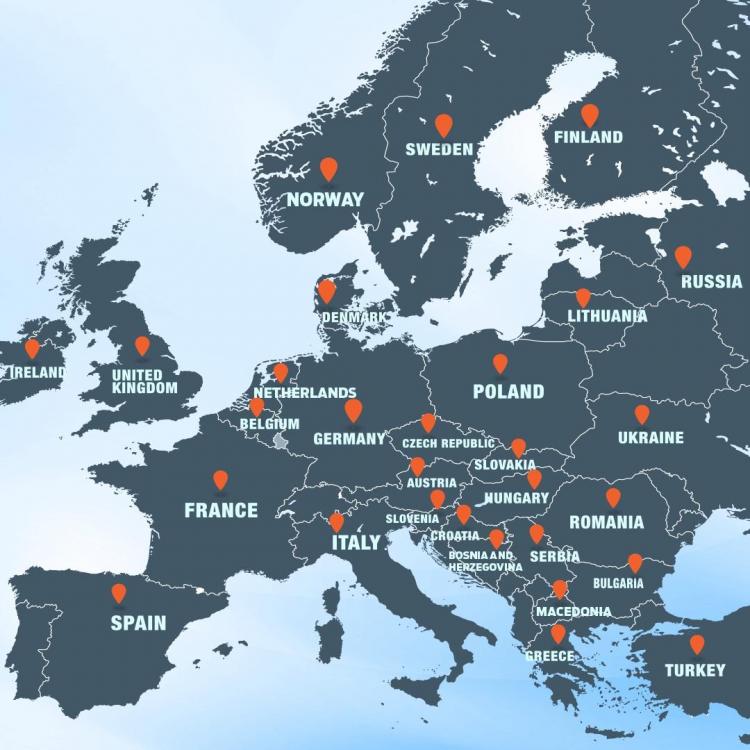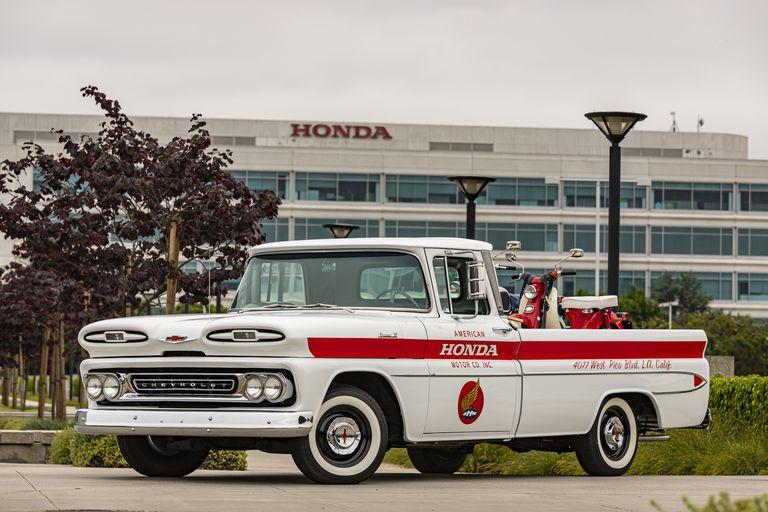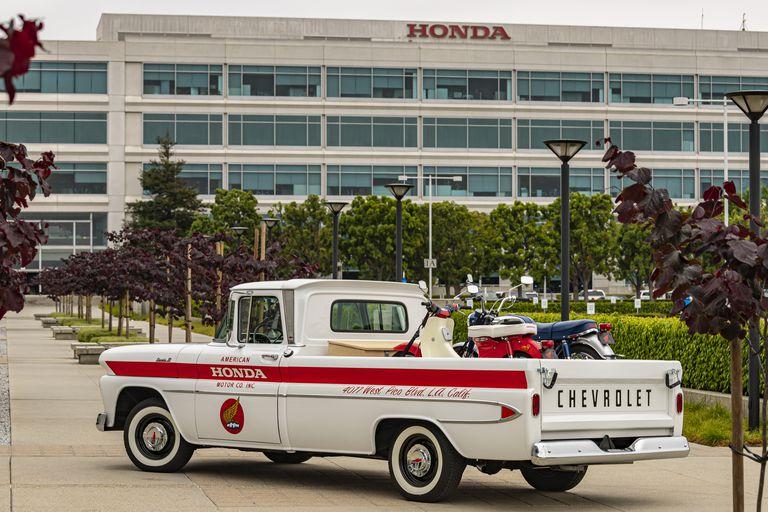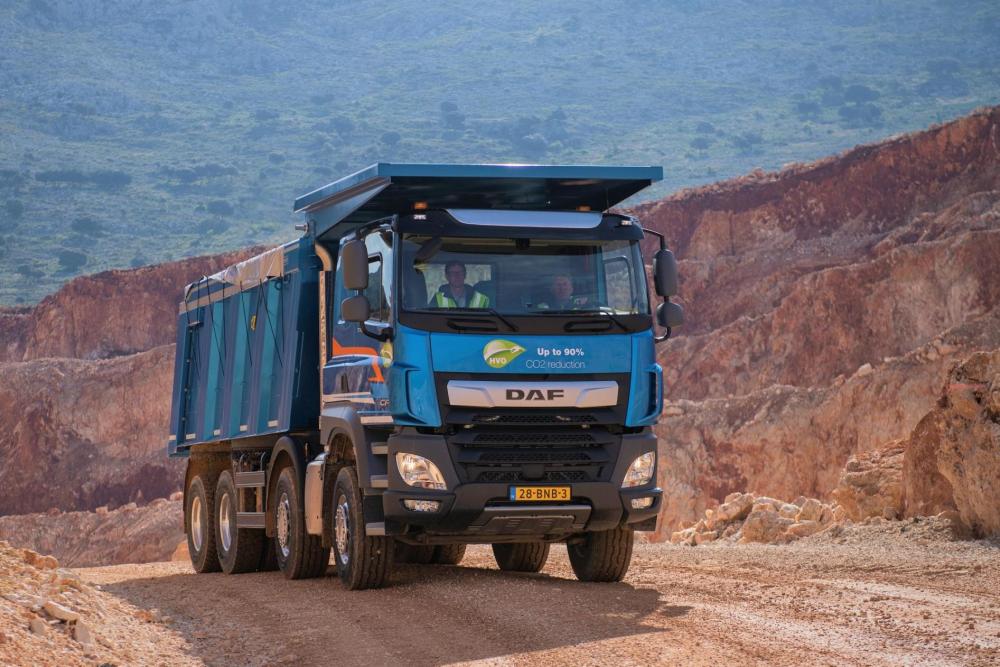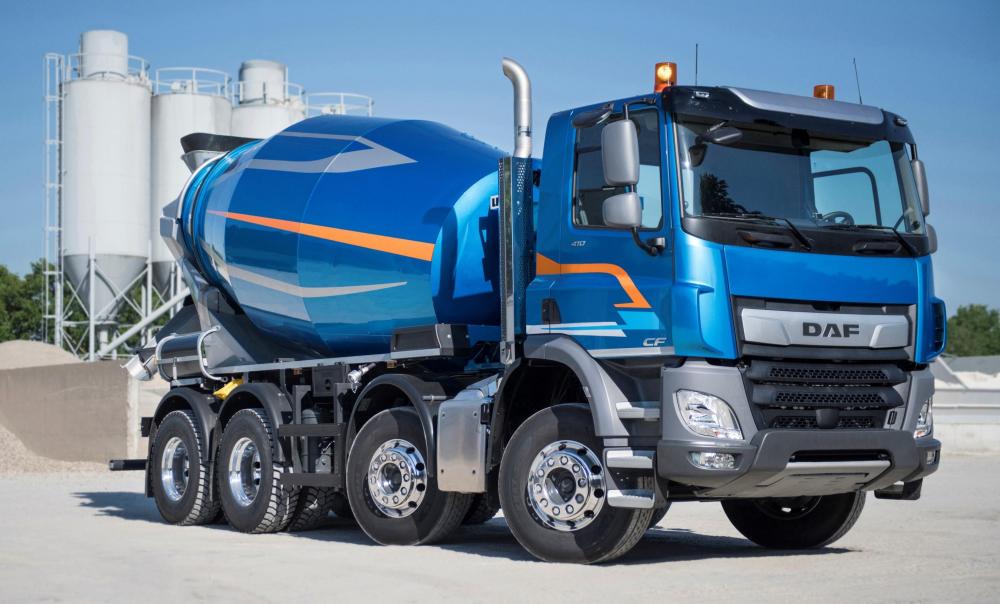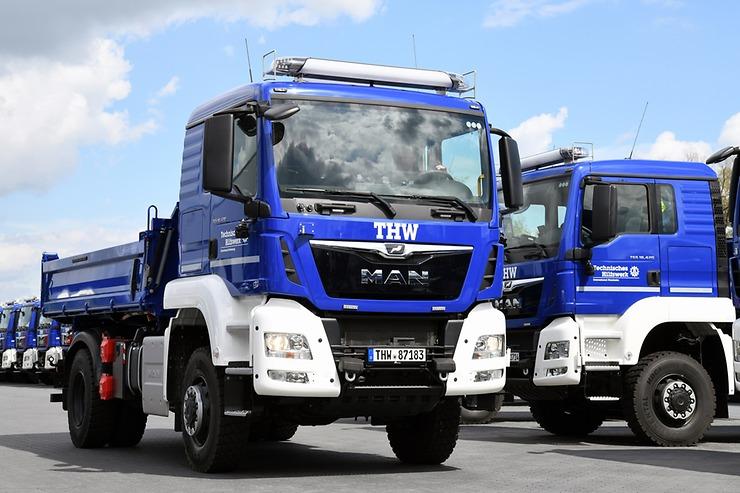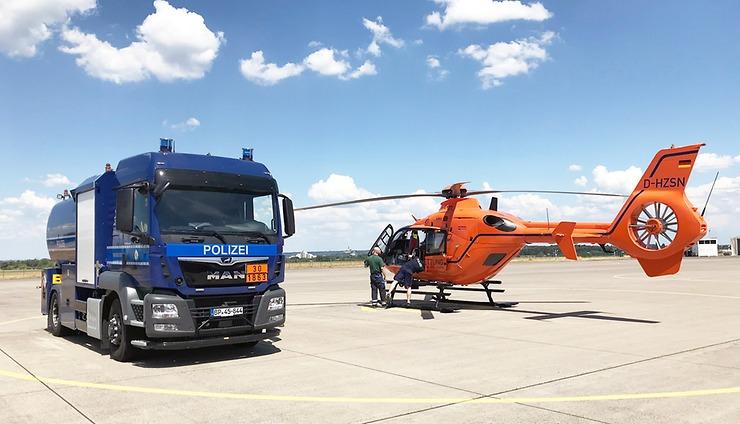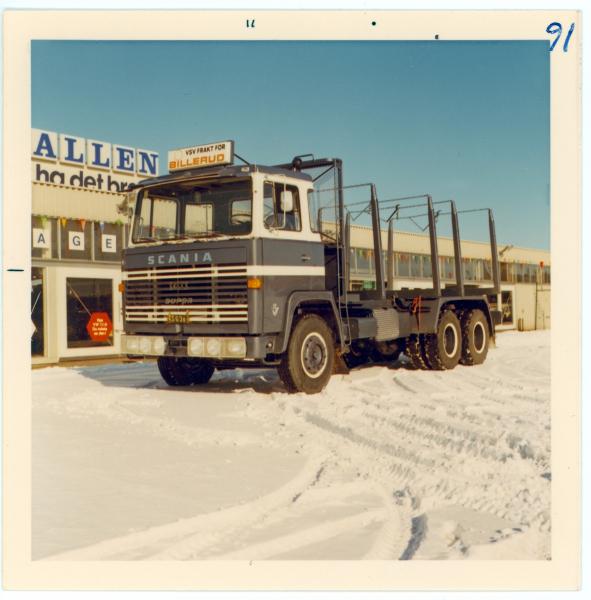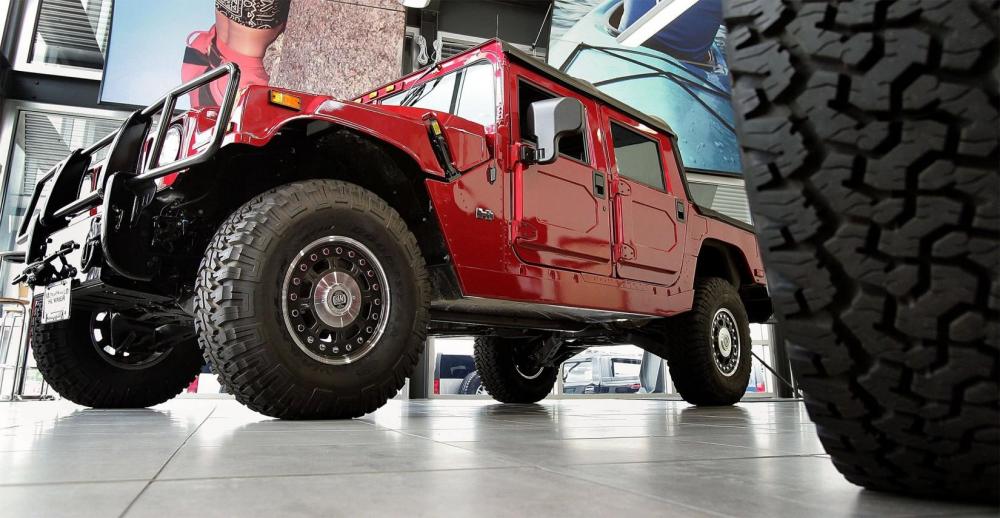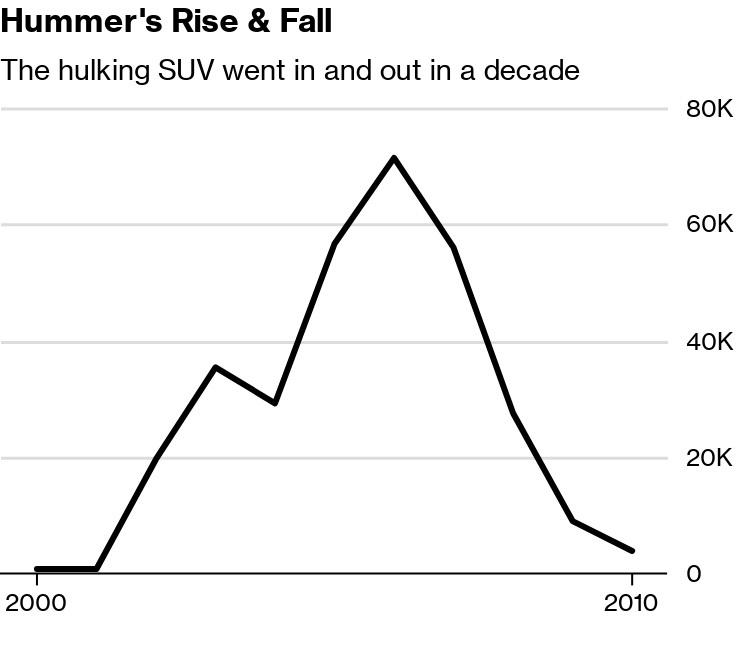
kscarbel2
Moderator-
Posts
18,544 -
Joined
-
Days Won
112
Content Type
Profiles
Forums
Gallery
Events
Blogs
BMT Wiki
Collections
Store
Everything posted by kscarbel2
-
Ford Trucks International / June 19, 2019 Ford Trucks continues to grow stronger in the European market! We are at your service across Europe with our extensive after-sales network! .
-
Andrew Wendler, Car & Driver / June 18, 2019 Restored 1961 Chevrolet Apache pickup faithfully recalls the fleet of similar Apaches that American Honda used as delivery vehicles in the company's early days. The authentically reproduced hand-painted graphics complement the Apache's 283-cubic-inch V-8 and three-speed manual transmission. Period-correct Honda 50 and CB160 motorcycles in the bed complete the effect. It's no secret that the 10-Best Trucks and SUVs–winning Honda Ridgeline is one of C/D's favorite mid-size pickups, but long before Honda began making pickups, let alone importing four-wheeled vehicles of any type to the United States, it made its mark selling motorcycles in Southern California. Not just any motorcycles, but inexpensive, lightweight, and nonthreatening motorcycles that appealed to buyers of all socioeconomic backgrounds and basically reinvented the domestic motorcycle market. But with no Ridgeline to call on, the task of keeping Honda's fledgling dealer network stocked required some outside assistance, so Honda assembled a small fleet of 1961 Chevrolet Apache pickups. They were detailed in AHM livery, and the company's sales force used them to make deliveries to dealers on a consignment basis. June 2019 marks American Honda's 60th anniversary, and to celebrate, the maker is revisiting those iconic Chevrolets and the role they played in launching the company here in the U.S. with a restored 1961 Chevrolet Apache 10 pickup presented in the classic AHM livery. So equipped, the trucks played a vital role in making Honda the number one selling motorcycle brand in the U.S in just a few short years. .
-
DAF Trucks Press Release / June 12, 2019 ‘Best in the market’ The DAF CF Construction series has won the prestigious TOP BAU Truck 2019 award in Slovakia, presented by leading magazine Transport a Logistika. Truck operators and drivers alike named DAF’s sturdy truck series as the best construction vehicles on the Slovakian market thanks to its robustness, high payloads, low operating costs, powerful drive trains and excellent driver-friendliness. “The high quality DAF CF Construction series is the Slovakian customer’s choice as it meets all requirements of modern business operations and offers great comfort to the driver at the same time”, said Viliam Bujna, CEO of LUXUR Media and publisher of Transport a Logistika magazine. “The range of DAF’s robust construction trucks offer the highest payloads in the market at the lowest operating costs.” “In addition, the state-of-the-art and powerful engines are in perfect harmony with the TraXon automated gearboxes and the wide range of DAF-in-house developed axles”, stated Bujna. “That guarantees industry leading on- and off-road capabilities. The CF Construction trucks simply are remarkable construction vehicles. And the drivers will agree, as the trucks offer class leading comfort, comparable to long haulage trucks.” An award to make us proud “We are truly proud to receive the TOP BAU TRUCK 2019 award”, added Richard Zink, Director Marketing & Sales and Member of the Board of Management at DAF Trucks. “The accolade is a valuable recognition from a comprehensive group of Slovakian experts. Moreover, the award underlines that our rigid and construction trucks are of the same high level of our award winning tractors: highly efficient, unmatched reliable and extremely comfortable.” DAF expands range for construction sector In order to further expand its reputation for offering the ideal truck for every application, DAF has recently expanded its product portfolio to include a number of new vehicle configurations, including an 8x4 ‘tridem’ rigid with double-drive tandem and steered trailing rear axle. The Dutch truck manufacturer has also introduced a 10-tonne front axle and a completely new 7.5-tonne non-steered trailing axle to extend its product portfolio. .
-
MAN Truck & Bus Press Release / June 13, 2019 In the past two years, the Procurement Agency of the German Federal Ministry of the Interior has ordered a total of 950 vehicles in various categories from MAN Truck & Bus Deutschland to be used by the country’s Federal Agency for Technical Relief (THW) and Federal Police. The THW is a German federal civil protection agency that provides technical relief during disasters, public emergencies and large-scale accidents, operating both in Germany and around the world. In a series of tenders the Procurement Agency of the Federal Ministry of the Interior awarded MAN Truck & Bus Deutschland contracts to supply a total of 950 vehicles to the THW. The 178 equipment vehicles are tried and tested MAN TGM 18.290 models with all-wheel drive, leaf-spring suspension on the front and rear axles and a long crew cab from MAN Individual. Add to this 210 MAN TGM 18.290 personnel lorries with crew cabs and a platform/tarpaulin-covered body, based on a 4x4 chassis with leaf-spring suspension on the front and rear axles. 400 MAN TGM 18,290 multi-purpose equipment wagons are also vested with this system. Some of the 152 MAN TGS 18.420 three-way tippers are fitted with loading cranes. The 10 tankers are used of the Federal Police for refuelling helicopters. To ensure that the fuel supply does not only function on well-developed airfields, the German Federal Police ordered tankers based on the MAN TGS 18.420 4x4H BL and equipped with on-demand MAN HydroDrive front wheel drive. “We are proud that the THW has opted for MAN. Emergency personnel and relief workers need particularly reliable and robust vehicles that must be operational at zero notice for many years. We’d like to wish all THW personnel our very best – and safe travels always,” said Holger Mandel, chairman of the Management Board of MAN Truck & Bus Deutschland. .
-
Iveco Truck & Bus Press Release / June 13, 2019
-
Iveco Truck & Bus Press Release / June 13, 2019
-
Scania Group Press Release / June 17, 2019 Thanks to some detective work and help from reliable Scania enthusiasts, we managed to track down the owner of the very first Scania V8 to roll off the production line. “I have always had a passion for new technology – now I’m driving electric,” says Henrik Olsson, now 81 years old. In the late 1960s, Henrik Olsson needed a replacement for the Scania LS76 that his transport company was using for timber haulage in the forests of Värmland in western Sweden. The contract for a new Scania had already been signed when, one Sunday, the salesman called again. “He said he’d heard a rumour about the release of a completely new model, a V8,” recalls Olsson, “and wondered if I’d be interested in becoming the first person to buy an LBT140.” Need for extra power That didn’t require much thought. Of course he was keen on the extra power: 350 hp compared with the 260 of the LS76. “We really needed that to handle the steep, slippery dirt roads. The LBT140 provided a sense of security. You knew you’d manage the hills without any problem.” Initially however, the new truck was not completely hassle-free. The engine was so powerful that the drive shaft broke a couple of times. “But on those occasions, the service was outstanding,” says Olsson. “That’s one of the reasons we stuck with Scania – plus the fact that the truck was good, of course.” “I’d love to start over again so I could drive electric trucks.” Having run his company for 20 years, Olsson sold the business, becoming an official for the Värmland province hauliers’ association. Now retired, he maintains a passion for vehicles. awaiting the delivery of the latest model. “I’ve always been interested in new technology, so of course I was curious. Driving an electric vehicle is a great feeling; the car reacts instantly, feels powerful and is completely quiet. I’d love to start over again as a driver so I could drive electric trucks.” So what happened to the first Scania V8? After four years and 600,000 problem-free kilometres, it was replaced. Its ultimate fate is unknown. .
-
Renault Trucks Press Release / June 17, 2019 Renault Trucks is 125 years of history. 125 years of know-how. 125 years of passion. 125 years of innovation. A legend in its own time. Ladies and gentlemen, we proudly present the RENAULT TRUCKS T HIGH 1894 EDITION https://www.en.renault-trucks.com/1894-edition . .
-
Renault Trucks Press Release / June 6, 2019 Transporters and fleet managers tell us how Renault Trucks improves their business and makes their life on African roads easier. .
-
Massive country.......massive truck market.
-
Ford Trucks Russia / June 7, 2019 The new Ford Trucks F-MAX tractor is presented to Russia's largest trucking companies at the ASMAP-2019 exhibition in Moscow. .
-
Volvo Trucks North America (VTNA) / June 13, 2019 We’ll show you the future — and change it — as we monitor and analyze critical components in real time. We provide proactive solutions to keep trucks on the road. Learn more about the expertise of our Uptime Center and Dealer Network from the video below. .
-
GM looks wistfully in rearview mirror and sees Hummer Jay Ramey, Automotive News / June 18, 2019 Axed in the darkest days of the auto industry crisis a decade ago, Hummer is now looking rosier and rosier in the rearview mirror, especially if you consider the rate at which General Motors' competitors are selling trucks and SUVs. Jeep is churning out vehicles at a pace not seen since World War II, as if suburbanites are mobilizing for Iwo Jima. Ford has not one but two Broncos in the works and has been making noises about ditching cars altogether. Even the Mustang will be some kind of truck very shortly. Ram has become a runaway hit for Fiat Chrysler Automobiles, which, if you look at its sales numbers, should really be called Jeep Ram Automobiles. General Motors is scrambling to adapt, seemingly adopting Ford's Big Bronco/Small Bronco tactic by introducing as many Blazer versions as it can. (We wouldn't bet against seeing a giant K5 Blazer at some point, at the rate things are going.) This brings us to the Hummer brand, which in its best days was a Gulf War I hero despite not seeing much combat and not being armored back in the day, and in its worst days was a caricature of itself in the form of Hummer H2s roaring between gas stations on the school run in some leafy suburb lest it run out. Arnold Schwarzenegger single-handedly made civilian H1 ownership a thing, all without social media. (Just let that achievement wash over you for a couple of minutes). That's how much power the Hummer brand once wielded, even before GM started churning out slightly more domesticated models. The gas crisis of 2005 dealt a serious blow to Hummer, but with the oil spigot once again turned back on, thanks to making the Midwest Plains states an earthquake theme park with timing slightly less predictable than Old Faithful, the Hummer brand soldiered on to see something approaching sensibility and variety, thanks to the H3 and the H3T. But it was not enough to withstand the pressures of the auto industry crisis that also saw the demise of Oldsmobile, Saab, Pontiac and Saturn. With the benefit of hindsight, it's hard to blame GM for killing off Hummer. A decade ago it seemed that by 2019 we'd all be driving very small hatchbacks that are either hybrid or electric, and hypermiling them to the point that turning on the A/C would make you ineligible for the diamond lane. In 2009, the vehicles of 2019 looked ... a lot smaller than they've turned out to be, and also a lot less expensive. Prius variants of all sizes, all with tapered wheel arches and steel wheels, were supposed to make up the bulk of the country's automotive landscape, and pickup trucks were supposed to be either electric or powered by tiny diesel engines, like they are in Europe. The landscape did indeed change -- but in a completely different way. Brands once considered above SUVs -- think Bentley, Rolls-Royce, Maserati, Alfa Romeo, Lamborghini -- are all aboard the SUV train today, with half of them costing as much as a house in the wealthy Indianapolis suburbs. We don't know when the SUV train will stop, but it's obvious GM now wishes that it had saved Hummer by introducing a Wrangler competitor back when it had the money to do so, thus allowing the brand to survive into the present day.
-
Navistar to Build Next-Gen Diesels at Alabama Engine Plant
kscarbel2 replied to kscarbel2's topic in Trucking News
Navistar pumping $125M into Alabama engine plant Commercial Carrier Journal (CCJ) / June 17, 2019 Navistar said Monday it will invest upwards of $125 million in new and expanded manufacturing capabilities at its Huntsville, Ala., engine plant over the next three years. The North Alabama plant currently manufacturers International-branded diesel engines, including the 12.4 liter big-bore A26 engine offered in International’s Class 8 on-highway trucks lineup. The additional capabilities put the plant at the head of the line to produce Navistar’s next-generation large-bore powertrains developed with global alliance partner and stakeholder Traton. “Over the last two decades, the State of Alabama has been a wonderful partner for Navistar as we have developed and produced big-bore engines and other products in the state,” says Navistar Executive Vice President and Chief Operating Officer Persio Lisboa. “Today, we are excited to have the opportunity to expand our presence in Alabama, while adding to our array of next-generation products.” Huntsville Mayor Tommy Battle called Navistar “a longstanding corporate partner in our community” adding he was pleased the company sees Huntsville as a strategic part of its growth strategy. The facility expansion is expected to add 145 jobs. “We welcome the new production component to Navistar’s manufacturing operations and look forward to a successful future,” Battle says. -
VW's $2 Billion Truck IPO Reflects Push to Trim the Empire Christoph Rauwald, Bloomberg / June 17, 2019 Volkswagen AG’s plan to list its truck division later this month will test whether it can pull off a feat that was once unthinkable for the German automotive giant: get smaller. For decades, the world’s biggest carmaker only knew how to expand -- adding Bentley luxury cruisers, Ducati racing bikes and Scania heavy trucks while taking its network of factories well past the 100 mark and its headcount over 640,000. Even in the face of the debilitating diesel-cheating scandal in 2015, the manufacturer didn’t trim its portfolio, bolstering investment in electric cars instead and even creating a new division for mobility services. Now with the pace of change in the auto industry quickening, Volkswagen is trying its hand at trimming the empire. If the listing of a minority stake in Traton SE -- a truck and bus maker with three vehicle brands and valued at as much as 16.5 billion euros ($18.5 billion)-- goes well, it would give Chief Executive Officer Herbert Diess more sway to balance the often diverging interests of VW shareholders including the Porsche and Piech owner family, Lower Saxony and powerful labor unions. Healthy Valuation “Traton’s IPO pricing suggests a healthy valuation which puts a spotlight on VW’s significant sum-of-its-parts disconnect,” RBC Capital Markets analyst Tom Narayan said in a note. Concerns over the company’s ability to switch to electric vehicles is “unfairly” weighing on its share price, the analyst said. Volkswagen rose 0.2% to 141.42 euros at 11:46 a.m. in Frankfurt trading, taking gains this year to 1.8%. For now, Diess is seeking deeper technology partnerships and the possible sale of assets like transmission maker Renk AG and MAN Energy Solutions, which develops engines. A successful Traton listing, targeted for June 28, could even spark rival Daimler AG to follow suit with a carve-out of its own truck business. Lagging Peers Traton's return on sales is rising, but still trails major heavy-truck competitors. The truck group comprises three main assets, Scania, MAN and Volkswagen-branded budget trucks sold in South America and Africa, as well as a unit offering digital services to fleet operators. With 29 production and assembly sites globally, the business last year sold 223,000 vehicles. While that’s 14% more than a year earlier, it’s less than half of Daimler’s truck division, the world’s biggest. Volkswagen is offering 50 million Traton shares at 27 euros to 33 euros apiece, plus a possible over-allotment of 7.5 million shares, meaning at the top end of the price range, the sale would raise as much as 1.9 billion euros. Here are the key points in one of the biggest initial public offerings in Europe this year: Sales Pitch Traton is looking to woo investors by combining the best-in-class technology and strong margins of the Scania unit with the prospect of a turnaround at MAN and growth potential in key markets, according to company presentations and research from advising banks seen by Bloomberg. The plan includes the following four pillars: Scania is the group’s crown jewel, and Traton will aim to show it can maintain the heavy-truck specialist’s profitability. The Swedish brand is expanding its use of alternative-fuel technology like hydrogen ahead of stricter emissions rules and introducing digital services to generate more revenue from fleet operators. MAN has long been a problem, but some investors like a turnaround story, and so Traton will push its effort to revive the German division’s weak returns. This will be underpinned by replacing a 12-year-old truck with a new model next year. MAN also has room to expand in the lucrative aftermarket business. Traton is a major player in Brazil -- a hugely profitable truck market before the economy tanked -- and a recovery there will play well for the manufacturer’s VW-branded budget trucks, which could expand in the Middle East, Africa and Mexico. Traton is still more a collection of parts than a whole, and the company will talk about synergy prospects with a target to cut costs by 700 million euros by combining purchasing and engineering. Scania is leading development of the so-called CBE, a 13-liter engine that’s due to power more than half of Traton’s heavy trucks in 2025. Strengths Chief Executive Officer Andreas Renschler, 61, is the mastermind behind Traton. After helping to establish Daimler’s commercial vehicles business as the world’s largest, he was lured to Volkswagen in 2014. Despite the partly overlapping operations, he’s improved earnings over the past four years, mainly by enforcing closer cooperation between long-standing rivals Scania and MAN. Investor interest in Traton will largely be a bet on Renschler’s veteran skills to deliver in the cyclical truck market. The timing of the listing, which was delayed earlier this year, is complicated by global volatility. The window may be as good as it gets. Rival Volvo Group -- the main pure-play competitor -- has gained 26% this year. “It’s no secret that the market environment is very volatile,” VW Chief Financial Officer Frank Witter told reporters on Monday. “It’s not ideal, but it’s not bad either.” VW remains open to sell more Traton stock at a later stage, up to a maximum stake of 24.9%, if market conditions are supportive, he said. Weaknesses Traton has only small bridgeheads in the key North American and Chinese markets, and the prospects for expanding those positions face obstacles. In North America -- the truck industry’s largest profit pool -- Traton merely owns a 16.8% shareholding in Navistar International Corp., which doesn’t it allow it to do much. Lifting the stake will cost money and add complexity. Meanwhile, Navistar still faces fierce competition from market leaders -- Daimler’s Freightliner, Volvo’s Mack and Paccar Inc. While Daimler and Volvo have functioning production joint ventures in China, the world’s biggest truck market, Traton’s cooperation with Sinotruk Hong Kong Ltd., where its holds a 25% stake through MAN, has yet to deliver the hoped-for results. Alliances can fall short of aspirations to create economies of scale, with the recent tensions at the Renault-Nissan Alliance a fresh reminder of the difficulties in uniting separate cultures. Traton also has a cooperation with Hino Motors Ltd., a Toyota Group company, on electric technology, product development and purchasing. MAN has long attempted a turnaround, but improvements have been tepid compared to an aggressive restructuring at Volvo that doubled margins within roughly three years. MAN’s production footprint in high-cost Germany and a lineup that includes less-profitable medium-duty trucks limits the potential for improvement.
-
Matt Cole, Commercial Carrier Journal (CCJ) / June 17, 2019 Recalls from three companies were announced recently by the National Highway Traffic Safety Administration, affecting a small number of trucks and trailers. Daimler Trucks North America (DTNA) issued a recall for approximately 253 model year 2019 Freightliner 108SD, 114SD, Business Class M2, Cascadia, Western Star 5700 and Freightliner Custom Chassis XC vehicles for an issue with air disk brakes. DTNA says the brake caliper mounting bolts on the affected trucks may not be tightened sufficiently, which could reduce the effectiveness of the brakes. Daimler will notify owners of affected trucks, and dealers will inspect and repair them for free. Owners can contact DTNA customer service at 1-800-547-0712 with recall number FL-816. NHTSA’s recall number is 19V-367. Additionally, Autocar is recalling approximately 23 model year 2019-2020 Xpeditor severe duty trucks. Autocar says the rear axle brake may have a delayed release, causing the truck to fall out of compliance with the Federal Motor Vehicle Safety Standard. Autocar will notify owners, and dealers will re-work the air brake systems for free. Owners can contact Autocar customer service at 1-888-218-3611 or 1-877-973-3486 with recall number ACX-1905. NHTSA’s recall number is 19V-354.
-
A massive loss of face.....heads are going to roll.
-
China pulls WTO suit over claim to be a market economy Tome Miles, Reuters / June 17, 2019 GENEVA - China has halted a dispute at the World Trade Organization over its claim to be a market economy, a panel of three WTO adjudicators said on Monday, meaning Beijing must accept continued EU and U.S. “anti-dumping” levies on cheap Chinese goods. One trade official close to the case said so much of the ruling had gone against Beijing that it had opted to pull the plug before the result became official. “They lost so much that they didn’t even want the world to see the panel’s reasoning,” the official said. Without a WTO ruling in Beijing’s favor, the EU and United States can keep imposing duties on cheap imports from China while disregarding its claim that they are fairly priced. China had insisted that they treat it as a “market economy”, countering their view that the price of Chinese exports could not be taken at face value due to state interference in the economy. It took legal action saying that under its 2001 WTO membership terms it must be recognized as a “market economy” after 15 years. “China believes that there can be no other plausible reading of this simple and unambiguous treaty language,” China’s WTO ambassador Zhang Xiangchen said at a WTO hearing in 2017, calling the text “crystal clear”. But the United States and the EU disagreed. They said Chinese goods — especially commodities such as steel and aluminum — were still heavily underpriced because of subsidies and state-backed oversupply, giving Chinese exporters an unfair advantage. The row had become an explosive issue for the United States, with President Donald Trump threatening to quit the WTO if the organization did not “shape up”. Chinese, EU and U.S. officials did not immediately comment on the suspension. Beijing launched disputes against Brussels and Washington at the WTO in December 2016. It only pursued the case against the EU, but asked to suspend legal proceedings on May 7, the panel said. After an EU request to take certain considerations into account, China reiterated its request to suspend legal proceedings. The panel accepted and halted the case on Friday. The official said China was on course to lose the bulk of the case, with only some minor points going in its favor. “They were going to win something, but it was overshadowed by the huge defeat that they had on the main claim.”
-
GM ponders an electric Hummer David Welch, Bloomberg / June 17, 2019 DETROIT -- A zero-emission Hummer sounds as paradoxical as non-alcoholic whiskey, but General Motors is mulling over the idea of building an electric vehicle that would bring the defunct gas-guzzling brand back to life. For now, it’s just an idea GM is considering as it plans which vehicles will be included in a fleet of electrified SUVs and trucks, say people familiar with the matter. The Hummer name has surfaced as way to tap growing demand for rugged SUVs with off-road capabilities, while avoiding the gasoline-burning image that made the brand something of a pariah a decade ago, said the people, who asked not to be named because the conversations are private. Electric Hummer chatter comes as GM is looking to transform itself from a conventional, gas-powered-vehicle maker into what CEO Mary Barra calls an “all-electric future.” Hummer is one of many options GM is exploring as it races to develop the next generation of battery-powered vehicles. Several other car companies also are rushing to produce commercially viable electric-powered models. When asked about it, GM President Mark Reuss was unconvinced. “I love Hummer,” Reuss said on the sidelines of a press conference on June 12. “I’m not sure. We’re looking at everything.” Building an electric Hummer may never come to pass, but without electrification, GM would have a tough time selling a traditional Hummer in an era when emissions rules have become much stricter than in the brand’s heyday. BEV3 project GM is currently working on two major battery-electric vehicle programs. The first is its BEV3 project, which will develop passenger cars, crossover SUVs and a variety of other small and mid-sized models. That’s part of the automaker’s pledge to put 20 EVs on the road globally by 2023. The second program would make electric pickups and other full-size vehicles, some of which can go off-road. In its family of brands, GM has large SUVs -- such as the Chevrolet Suburban and Cadillac Escalade -- as well as hulking GMC vehicles including the Sierra truck and Yukon SUV. GMC also has Denali-labeled models that denote luxury and an AT4 brand for off-road capable trucks. Any of those potentially could be offered with electric powertrains, Reuss said. “It’s massive. There might be places where we go first that are not just heavy-duty work trucks but more style and capability for off-road,” he said. “There are lots of things that are very attractive.” GM kept Hummer after its 2009 bankruptcy but halted sales in 2010. Back then, the 10-miles-per-gallon Hummer H2 made the brand a symbol of automaker indifference to global warming. The vehicle was so heavy its weight placed it beyond the reach of federal government rules for fuel-economy tests, further enraging environmentalists. Hummer’s death knell came when oil soared past $100 a barrel, spiking gas prices and sinking sales. GM bought the brand in 1998, six years after AM General debuted it as a civilian version of the armored Humvee military vehicle made famous for its role in the Gulf War. Actor and former California Gov. Arnold Schwarzenegger was an early and very public advocate for the brand and its first model, which later became known as the H1. GM sales started with the H2 model in 2002, a $60,000 SUV made using some parts from Chevy pickups and SUVs. It was a smash hit among buyers looking for brawn and bling, prompting the Detroit automaker to follow up with the mid-sized H3 SUV and H3T pickup truck. Demand for Hummer vehicles peaked in 2006 with U.S. sales of 71,524 vehicles, but fewer than 4,000 were sold by 2010, according to the Automotive News Data Center. Watching Jeep Over the past few years, GM has been watching the growth of Jeep, the crown jewel and moneymaker of Fiat Chrysler Automobiles, and wondering if Hummer might win a piece of that market, said the people familiar with the brand discussions. GM sees an opportunity to compete with Jeep for off-road vehicles that have creature comforts commanding high premiums, two of the people said. The company’s designers have done work with Hummer concepts and have experimented with Hummer styling cues on future GMC brand models. Even if GM goes through with a plan to make an electric Hummer, it would be years away. GM’s planned electric-truck project is well underway, but those models aren’t expected to launch until after the debut of the BEV3 architecture for smaller vehicles. Cadillac or one of the higher-volume brands would probably get some of the first models on the larger electric-truck-based platform. Earlier this year, GM was negotiating to form a joint venture with Rivian Automotive Inc., a startup electric-truck maker based outside Detroit. When the deal fell apart, GM accelerated development of its own battery-powered pickup and SUV program. It’s not alone in thinking there’s latent demand for large and luxury-market vehicles. When the GM deal died, Ford Motor Co. invested $500 million in Rivian with plans to build an electric pickup. And Jaguar Land Rover Holdings., which has a strong presence in large and luxury SUVs, will sell a plug-in hybrid version of the Range Rover this summer. The Indian-owned, British brand also has joined forces with BMW AG to work on electric drive. At its annual meeting on June 11, Tesla Inc. CEO Elon Musk said he is pushing hard to get an electric pickup truck that is capable of work duties but drives like a Porsche. He plans to show the vehicle this summer. Should GM decide to move forward with Hummer, it would need to rebuild the brand’s marketing and retail strategy. The automaker could sell Hummers in Cadillac or Buick-GMC dealerships -- for example in a small, brand-dedicated showroom. Previously GM gave specific franchises to separate Hummer dealers, who were disgruntled when sales ended. That alone could be a hurdle for greenlighting a resuscitated Hummer brand, one of the people said. Whatever happens, GM won’t be the first to think of an electric Hummer. Schwarzenegger worked with Kriesel Electric to put a battery and EV motor in his own H1 two years ago -- pioneering a zero-emission version of a vehicle that once went by the tagline “Like Nothing Else.” .
BigMackTrucks.com
BigMackTrucks.com is a support forum for antique, classic and modern Mack Trucks! The forum is owned and maintained by Watt's Truck Center, Inc. an independent, full service Mack dealer. The forums are not affiliated with Mack Trucks, Inc.
Our Vendors and Advertisers
Thank you for your support!


